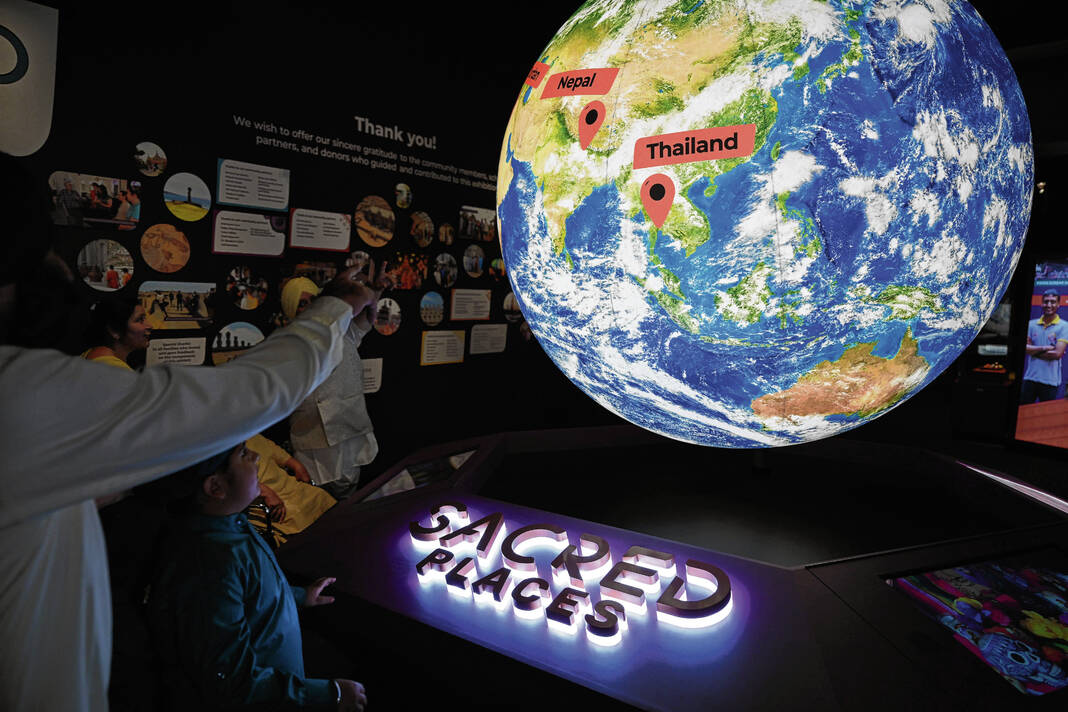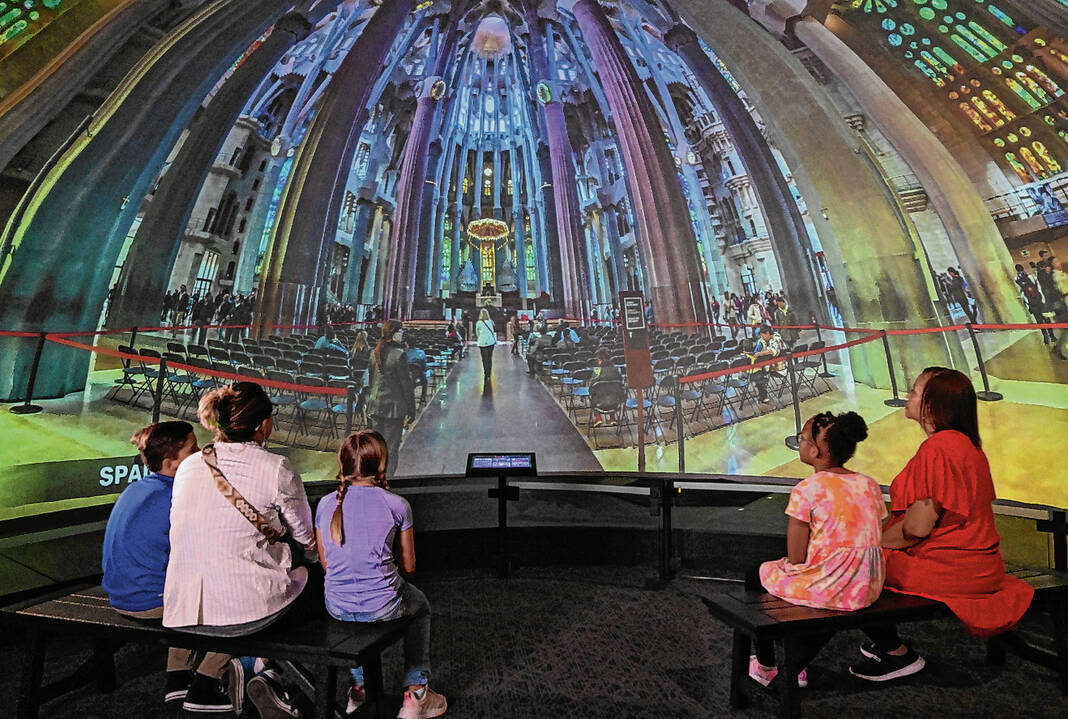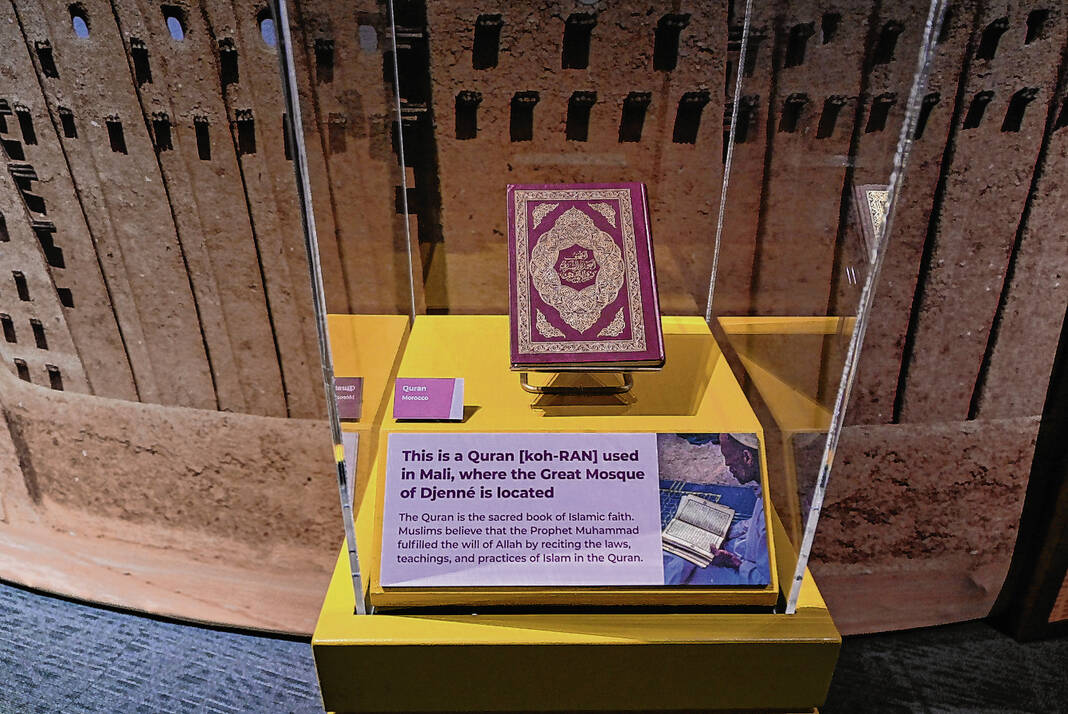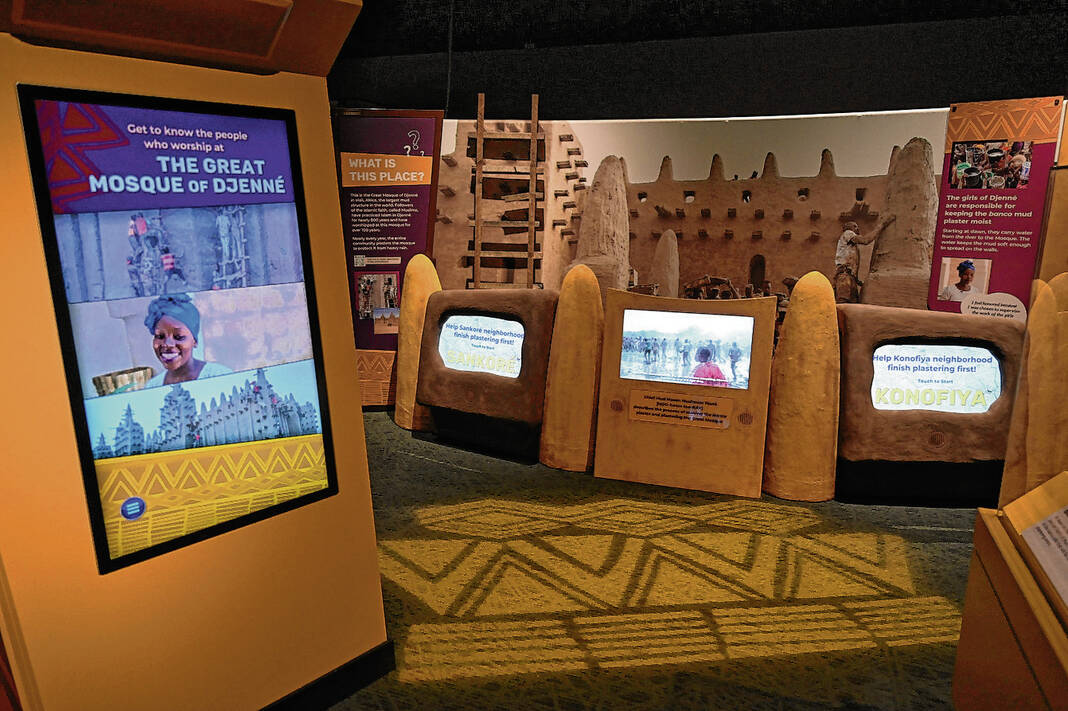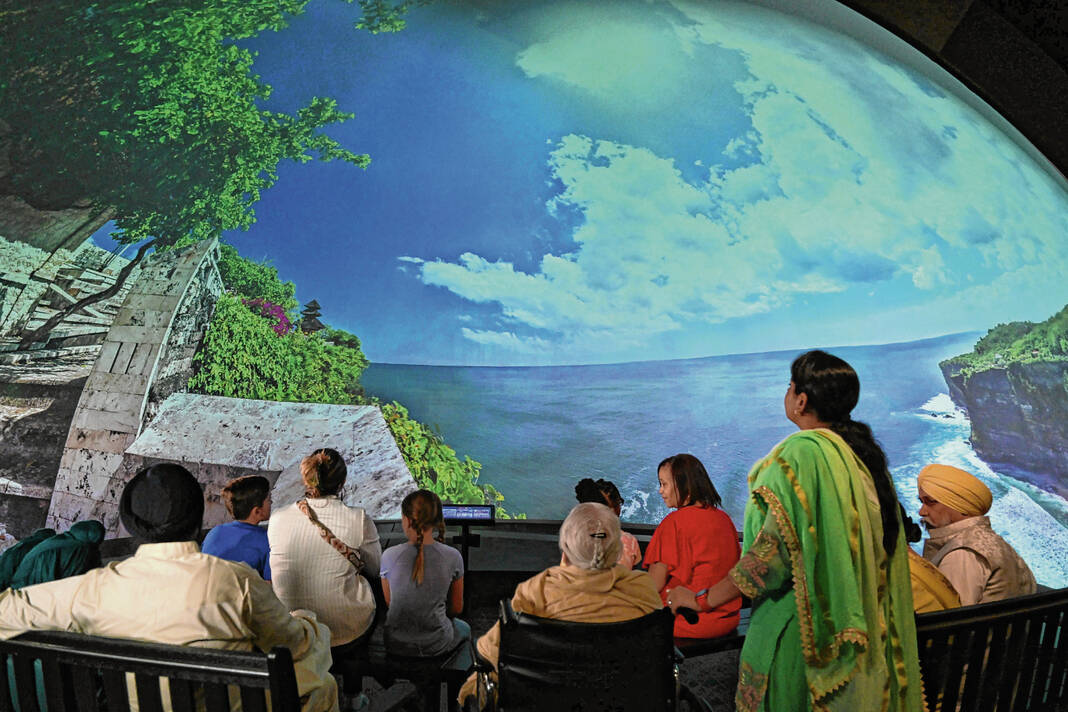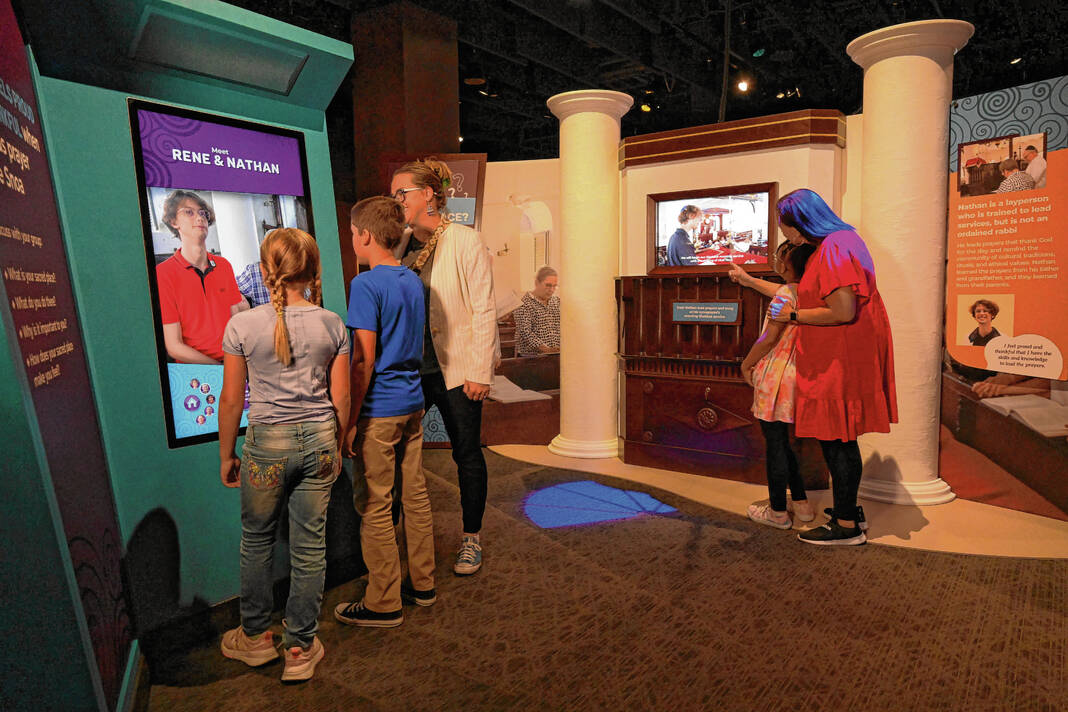The far-flung locales are thousands of miles apart.
A Buddhist temple in Thailand, a Catholic church in Jordan, a Hindu temple in Nepal, an island in the Pacific Ocean — each one connected to stories included in the newest exhibition at the Children’s Museum of Indianapolis. The sites represent many different faiths to much different people.
But at the most basic level, the places share a vital connection: each is considered sacred in their own ways.
“We know we can’t tell every story about every religion in-depth. We’re very careful then to make it clear that people’s faith journey in relation to a place is very individualized, very personal,” said Monica Ramsey, vice president of experience development and family learning for the Children’s Museum of Indianapolis. “So it’s about making an emotional connection with that individual story, recognizing that’s their experience, and recognizing how you can show similarities to your own experience.”
“Sacred Places” is the most recent addition to the Children’s Museum, taking visitors to faith-based sites from around the world. The exhibit shares the religious and spiritual beliefs of young people who live in and worship at these sites, and encourages children and their families to explore what makes a site sacred.
Guests to the museum discover more about the sacred through immersive experiences, object displays, a dome theater, and special programming. In the stories of the young guides included in the exhibit, people will hopefully learn more about how different people feel, what they do and what they experience when they visit their intensely special places.
“By showcasing some of the world’s sacred places, we hope to foster curiosity and understanding of religious traditions so that people may better understand one another and communicate in thoughtful and respectful ways,” said Jennifer Pace Robinson, president and CEO of the Children’s Museum of Indianapolis.
“Sacred Places” builds on the success the Children’s Museum has had revealing insights about religions around the world. In 2015, the museum collaborated with National Geographic to create “Sacred Journeys,” a temporary exhibit funded by Lilly Endowment that explored religious and spiritual pilgrimages.
Religious themes also have been addressed in the museum’s permanent exhibit, “The Power of Children: Making a Difference,” as well as its rotating global cultures exhibit, “Take Me There.”
“We started asking the question on how a museum could, and should, talk about the topic of religion,” Ramsey said. “It’s tough, but what we want to do here in our family learning framework is create spaces where kids and their adults can have really rich conversations. They can talk about things that are familiar with them, and also explore things that are different.”
In creating it, the museum’s exhibit team traveled around the world to build relationships with communities of faith in different countries. The key was to better understand the significance of young peoples’ religious and spiritual beliefs and practices.
The team collected interviews, voice recordings, photography, and 360-degree video to immerse people into the sights and sounds of these sacred sites across the U.S. and world, including Indianapolis sites.
“We really wanted to focus on individuals. With this project, we were really thinking about what kind of variety we could offer to children. We started with ideas of places, and for us, it was about building a relationship with people in a place,” Ramsey said.
Take for example the story of Samanera Natthapol Duangjampa (Kaew), a Buddhist monk-in-training. His segment brings museum visitors through Wat Arun, one of the most spectacular temples in Thailand.
Guests can hear from Aïssata Djittéye as she leads people through the Great Mosque in Djenné, Mali — the largest mud and brick structure on Earth. Aïssata shares the extraordinary lengths she and other girls in the region take to care for the mosque, carrying water from a nearby river to repair and re-plaster the mud surface of the building.
One of the most iconic and recognizable sacred sites in the world are the ancient stone statues of Rapa Nui, Chile — also known as the Easter Islands. A young person named Merahi Atam guides people through the spiritual traditions and daily life honoring the Moai, the ancestors embodied by the ancient stone statues.
“We have to take care of nature, we have to take care of our culture, we have to take care of the people next to us, we have to take care of our families and ourselves so that it will last over time,” said Merahi in the exhibit.
A key component of “Sacred Places” asks museum visitors to consider the nature of faith-based places, as well as to reflect on sacred places in their own lives.
The exhibit asks questions of them — What makes a place sacred? Do you have a sacred place? Why is your sacred place important to you? — to connect them to the stories told in the exhibit.
“We want people to see how our belief systems interconnect us,” Ramsey said.
“Sacred Places” is made possible by a grant from Lilly Endowment through its national Religion and Cultural Institutions Initiative. The aim of the initiative is to improve the public understanding of religion and thus foster greater knowledge of and respect for diverse religious traditions.
Organizers at the Children’s Museum hope those to go through the exhibit connect their own faith experiences with those depicted in the sacred sites across the world.
“We hope people walk in and see something that is familiar to them — maybe not exactly what they believe or practice — but an element that they see connects them to others,” Ramsey said.
“Sacred Places” is on display at the museum through April 7, 2024.
IF YOU GO
“Sacred Places”
What: A new exhibit taking visitors to sacred sites from around the world, sharing the religious and spiritual beliefs of young people who live in and worship at these sites while encouraging children and their families to explore what makes a site sacred.
Where: The Children’s Museum of Indianapolis, 3000 N. Meridian St.
Museum hours: 10 a.m. to 5 p.m. Tuesday through Sunday; closed Monday
Information: childrensmuseum.org


